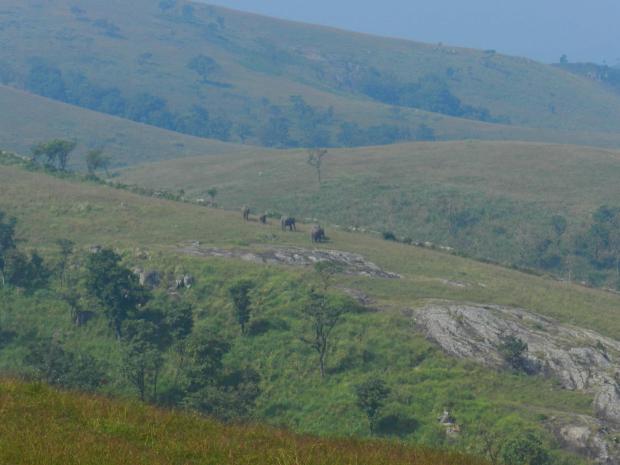
Photo: Vidisha Kulkarni / Research Matters
In the month of May, over 6000 personnel from the National Disaster Relief Force were deployed for rescue operations in Garwhal and Kumaon districts in Uttarakhand. A rather uncommon, unappreciated disaster had struck that region – forest fires. A recent study by researchers at the Indian Institute of Science, Bangalore is a significant step towards understanding the cause of devastating forest fires.
Every year forest fires destroy vast regions of forestland, thus adversely affecting the inhabitants and the flora and fauna of that region. Despite its adverse effects, the underlying factors that influence the spread of these fires are very poorly understood. In this novel study, the researchers have discovered that the highest fire frequencies occur in the mid-rainfall region, and not in the driest region of the forest, as one would have thought. The study was carried out in the Mudumalai Wildlife Sanctuary and National Park, located in the state of Tamil Nadu.
Mudumalai encompasses a range of vegetation types, depending upon the rainfall regime. It is a seasonally dry tropical forest with a defined dry season. This seasonality makes these forests susceptible to fire almost every year. However, regions within the forests with different vegetation types are affected by fire to different extents. This study investigated the different environmental constraints that influence the spread of fire in different regions within Mudumalai.
For the study, the researchers analysed the dataset with information on rainfall and fire patterns in the Mudumalai landscape for two decades, from1990 to 2010. They divided the study area into four moisture regimes in the order of decreasing annual rainfall. The wet season rainfall during April - October contributes to the growth of vegetation, which serves as a primary fuel for fires. Following the wet season, Mudumalai experiences short, heavy spells of rainfall during November and December, also called the dry season. Trees begin to shed their leaves during the dry season. With minimal rainfall in the dry season, these leaves dry out and serve as good fuel for forest fires. While wet season rainfall contributes to the growth of fuel, dry season rainfall determines how well the fuel components dry out.
The researchers chose the high rainfall in the wet season of previous year as a measure of amount of fuel, or fuel load for fires the following year and the dry season rainfall as an indicator of fuel moisture. Most fires occur in Mudumalai during January - April, shortly after the dry season and are influenced both by fuel load and fuel moisture. They found that different fuel related factors determine the extent of fire spread within different moisture regimes of the Mudumalai landscape.
The wettest region experienced fires only in cases of severe drought. The forest fire in this region depended on the rainfall in the dry season, which is a proxy for fuel moisture. So, fires in the wettest regions were limited by fuel moisture. In contrast, the interaction of the amount of fuel and fuel moisture limited the forest fires in the relatively dry regions. In regions that were moderately wet, the fuel load depended on the area burnt due to forest fires in the previous year and the wet season rainfall. In the driest regions, the fuel load depended only on the amount of rainfall in the wet season. Thus, different moisture regimes within Mudumalai landscape corresponded to different fire patterns influenced by fuel load and fuel moisture.
When asked about the motivation behind this study, Prof. Sukumar, Professor at the Centre for Ecological Sciences and a member of the study group, gives due credit to an unlikely candidate, the elephant. “The inspiration for any study that I undertake is the elephant! Elephants make a major impact on many plant species and their populations. At the same time, I realized that dry season fires play a major role in the mortality of young plants and that it is important to understand what environmental factor determine the occurrence and extent of fire in a given year”, he says.
With the aim to understand the interplay of forest fires and biodiversity, the researchers will next determine the sensitivity of different plant species within a region to fire. “The insights from such studies can be used control destructive fires, and use fire as a management tool at the appropriate season if needed, in order to maintain biodiversity”, emphasizes Prof. Sukumar.

























